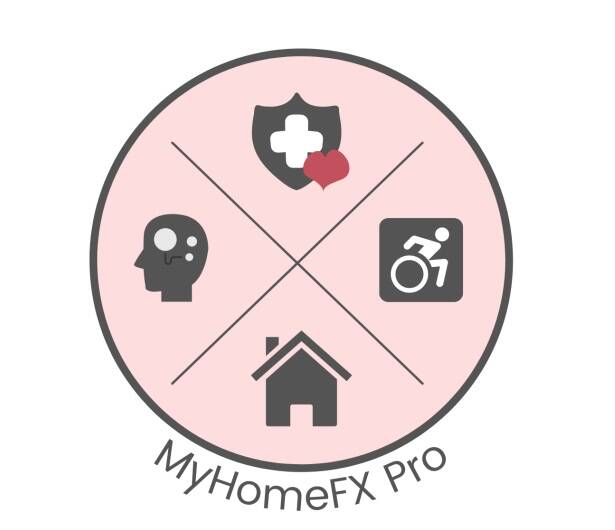Could Santa afford to downsize?
New app from Winnipeg age-in-place specialist seeks to address burgeoning issue for millions of Canadians
Advertisement
Read this article for free:
or
Already have an account? Log in here »
To continue reading, please subscribe:
Monthly Digital Subscription
$0 for the first 4 weeks*
- Enjoy unlimited reading on winnipegfreepress.com
- Read the E-Edition, our digital replica newspaper
- Access News Break, our award-winning app
- Play interactive puzzles
*No charge for 4 weeks then price increases to the regular rate of $19.00 plus GST every four weeks. Offer available to new and qualified returning subscribers only. Cancel any time.
Monthly Digital Subscription
$4.75/week*
- Enjoy unlimited reading on winnipegfreepress.com
- Read the E-Edition, our digital replica newspaper
- Access News Break, our award-winning app
- Play interactive puzzles
*Billed as $19 plus GST every four weeks. Cancel any time.
To continue reading, please subscribe:
Add Free Press access to your Brandon Sun subscription for only an additional
$1 for the first 4 weeks*
*Your next subscription payment will increase by $1.00 and you will be charged $16.99 plus GST for four weeks. After four weeks, your payment will increase to $23.99 plus GST every four weeks.
Read unlimited articles for free today:
or
Already have an account? Log in here »
Hey there, time traveller!
This article was published 21/12/2024 (347 days ago), so information in it may no longer be current.
What would Santa do?
If anyone is getting up there in age to the point of considering whether to move to more age-friendly housing, jolly ol’ St. Nick fits the bill.
Money may be no object for the big guy should that be the case. But when it comes to aging in place or finding appropriate housing allowing us, non-magical folks to live safely in our golden years, finances often will play a factor.

Marnie Courage is an occupational therapist and therapist with Enabling Access. (Mikaela MacKenzie / Free Press files)
A new, award-winning mobile app, developed by a Winnipeg occupational therapist, may offer some guidance on this front.
“The goal is to help people move from a reactive stance on their housing situation as they age to being more proactive,” says Marnie Courage, occupational therapist with Enabling Access.
Courage is also the founder of INcluzia Inc, a company behind two new mobile apps called MyHomeFX and MyHomeFX Pro. Both will be available in 2025 with the ‘pro’ version charging a subscription for occupational therapists to help assess aging clients’ homes for access and safety.
But MyHomeFX is of interest to the rest of us.
It’s a free-to-use app aimed at aging homeowners to help them deal with the “modify or move” dilemma, Courage says.
“People don’t know what they don’t know when it comes to aging in place safely,” says Courage, whose app recently won the 2024 AGE-WELL National Impact Challenge: Solutions for Healthy Aging.
Ignorance may be bliss, but it’s also a recipe for disaster.
Courage adds she has seen many instances of individuals living in their homes, making no decision on their housing future until it’s too late.
Perhaps they fall, sustain a serious injury requiring hospitalization and are unable to return home because, at the very least, their home requires modifications to ensure it is safe for them to live there independently.
“So, people are staying in the hospital longer than needed and ending up in long-term care if there’s a bed,” she says.

MyHomeFX helps aging Canadians potentially avoid this, giving aging homeowners guidance on whether their home just needs rails in bathrooms and entryways, which could cost a few hundred dollars, or if the costs are likely to be in the tens of thousands of dollars for a wheelchair-accessible bathroom on the main floor.
It’s likely most homes need modifications, a new report from the CSA (Canadian Standards Association) Public Policy Centre suggests.
“Around 95 per cent of Canadians believe aging in their home would maintain dignity and independence,” says Jordann Thirgood, the report’s author and manager of public policy at CSA Group.
Yet the study found only 12 per cent of respondents indicated they have the finances to enable aging in place from paying for additional home care to modifying their home.
Another issue is finding suitable, affordable housing for those who choose to move. Already, a large shortage of age-friendly housing exists, she adds.
This shortage will likely grow with the study forecasting demand for long-term care — already facing a shortage of nearly 80,000 beds — is expected to grow almost 60 per cent by 2031.
The need for long-term care and other housing like age-friendly apartments will likely accelerate even more afterward.
That’s because many aging Canadians are much healthier today than previous generations, allowing them to stay in their homes longer, says market analyst Taylor Pardy with the CMHC (Canada Mortgage and Housing Corp.).
“We will need to wait until the Canadians are much more advanced in age before we see a significant portion of these households transitioning.”

Pardy adds that will likely occur in the 2030s, when most baby boomers are in their 80s and 90s, leading to a potential deluge of supply for single-family homes for the resale market.
That may be good news for future young families seeking homes. But it will also mean Canada will require significantly more age-friendly housing, as a recent report on investment opportunities in commercial real estate highlights.
The 2024 Altus Group report forecasts the growth for seniors housing, including long-term care, in cities like Toronto will be roughly an additional 2,200 new units per year over the next two decades.
Not only may many retiring and retired Canadians face a housing pinch in years to come, they are also likely challenged to plan for it.
“It’s really tough to think through because you don’t know how long you’re going to stay healthy,” says Daryl Diamond, chief retirement income strategist at Dynamic Funds.
Even the most thorough retirement plans can only estimate, says Diamond, author of Retirement for the Record: Planning Reliable Income for Your Lifetime … To the Soundtrack of Your Life.
“From the client base I have worked with, there has always been a strong desire to age in place.”
The best plans have always addressed a multitude of possible outcomes. Notably, they should factor in the potential of paying for two households, should a spouse require long-term care and the other remains in their home, he adds.
Planning to afford these scenarios generally involves financial trade-offs.

That’s one reason Courage created MyHomeFX. The app can help individuals understand one of the bigger trade-off decisions. That being whether to spend thousands to modify a home or sell it and downsize.
Yet the app isn’t just for aging homeowners, she adds. It’s also for adult children (or the elves in Santa’s case) who can use it to assess their aging parents’ home.
They may not be able to convince their parents to move to age-friendly living or fund modifications in their homes, Courage notes.
“But at least if something happens, like a hospitalization from a fall, the family can make informed decisions about the next best step in a difficult situation.”
Joel Schlesinger is a Winnipeg-based freelance journalist
joelschles@gmail.com



